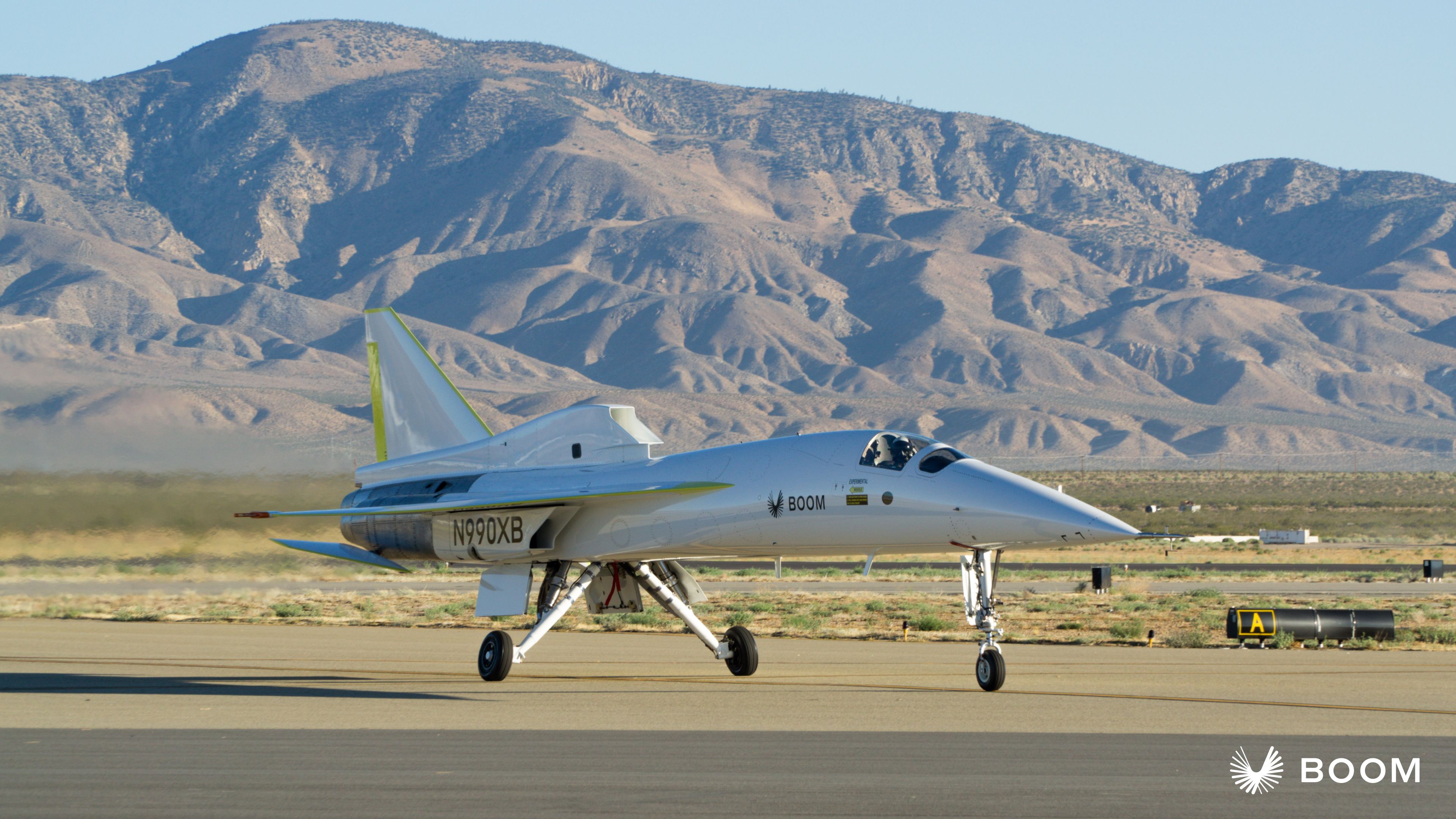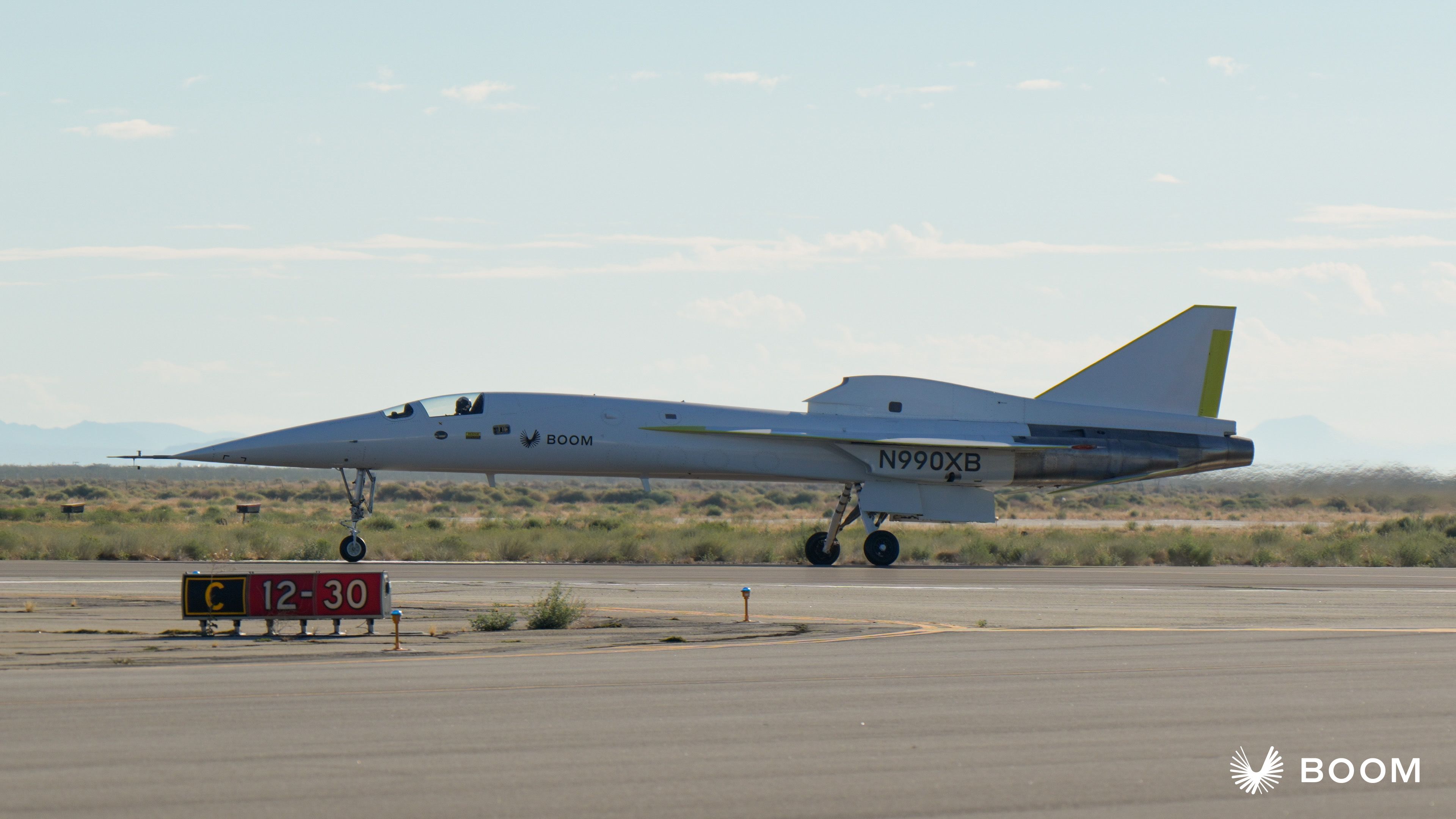Summary
- Boom Supersonic has received governmental certifications to conduct test flights with its prototype aircraft, XB-1, which will serve as a supersonic technology testbed for future passenger jets.
- XB-1 has successfully passed the FAA inspection and been granted an airworthiness certificate, allowing the test pilots to progress to actual flight tests at the Mojave Air & Space Port.
- The XB-1 will be used to test composite structures, wing design, and other technologies at supersonic speeds, providing valuable data for the development of Boom Supersonic's full-size supersonic transport.
Boom Supersonic announced on August 24 that the aircraft manufacturer now has a prototype in XB-1 and test pilots have received multiple governmental certifications to conduct test flights with XB-1. The purpose of XB-1 is to be a supersonic technology testbed for Boom Supersonic to build future supersonic passenger jets.
XB-1 Legally Cleared to Fly
Before flying as an experimental prototype, the US Federal Aviation Administration (FAA) must provide an airworthiness certificate only available after an inspection. Now that Boom Supersonic has passed its FAA inspection for XB-1 plus authorized Chief Test Pilot Bill “Doc” Shoemaker and test pilot Tristan “Gepetto” Brandenburg to fly XB-1 – testing can go beyond taxi-tests to actual flight.
The actual supersonic test flights will happen at the Mojave Air & Space Port. This happens to be the same airspace that Charles “Chuck” Yeager went past Mach 1 – the speed of sound – in his X-1 rocket plane on October 14, 1947.
For Chief Pilot Bill “Doc” Shoemaker, XB-1 is a continuation of previous flight test work at the test flight;
“It’s fitting that XB-1 is now progressing toward first flight at the Mojave Air & Space Port, home to more than 50 first flights and other significant aviation events. I’m looking forward to flying XB-1 here, building on the achievements of other talented engineers and pilots who inspire us every day to make supersonic travel mainstream.”
Now that the regulatory paperwork is approved for safety, the testing may now begin. But what will actually be tested?
Historically proven J85 engines
Not the three General Electric J85 engines – engines that have flown since 1954 in airplanes as diverse as the Bell X-14 experimental vertical take off and landing jet, the Canadair CT-114 Tutor subsonic trainer & Snowbirds airshow aircraft, and the Northrop T-38 Talon supersonic trainer. General Electric in a June 1, 2020 blog post noted over 12,000 J85 engines were built between 1954 and 1988, and the engine has an 8:1 thrust-to-weight ratio, especially as the first small turbojet with an afterburner.
Yet, as Boom Supersonic had difficulties finding an engine manufacturer it does not have an engine to flight test yet but still needs to test certain technologies at supersonic speed. Hence the need for the XB-1.
Technologies receiving XB-1 supersonic testing
The XB-1 will be testing, among other things at supersonic speed, both composite structures, and the wing design.
Read about the XB-1’s 2020 rollout
Furthermore, Boom Aerospace wants to test the aerodynamics at actual supersonic speed. The actual tests will verify the computer models of today versus the Concorde’s years of wind tunnel testing.
As per the YouTube above, Boom Aerospace also will be testing with XB-1 a carbon composite and titanium fuselage at supersonic speeds. Although there are other commercial aircraft using composite construction, like the Boeing 787, that fly globally today, none fly at supersonic speed. As Concorde found out, supersonic flight with metals changed the length of the aircraft. Hence the need to physically test with XB-1 composite construction with carbon fiber at supersonic speed before building Boom Overture, the full-size supersonic transport (SST).
Are you hoping to watch an XB-1 test flight? Please share in the comments.
Sources: Boom Aerospace, General Electric Blog



